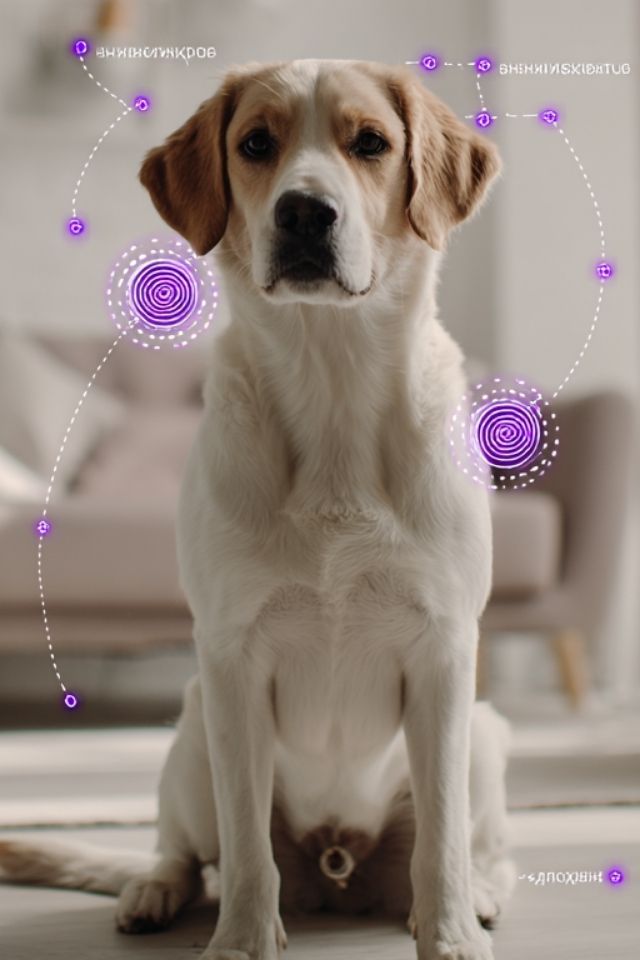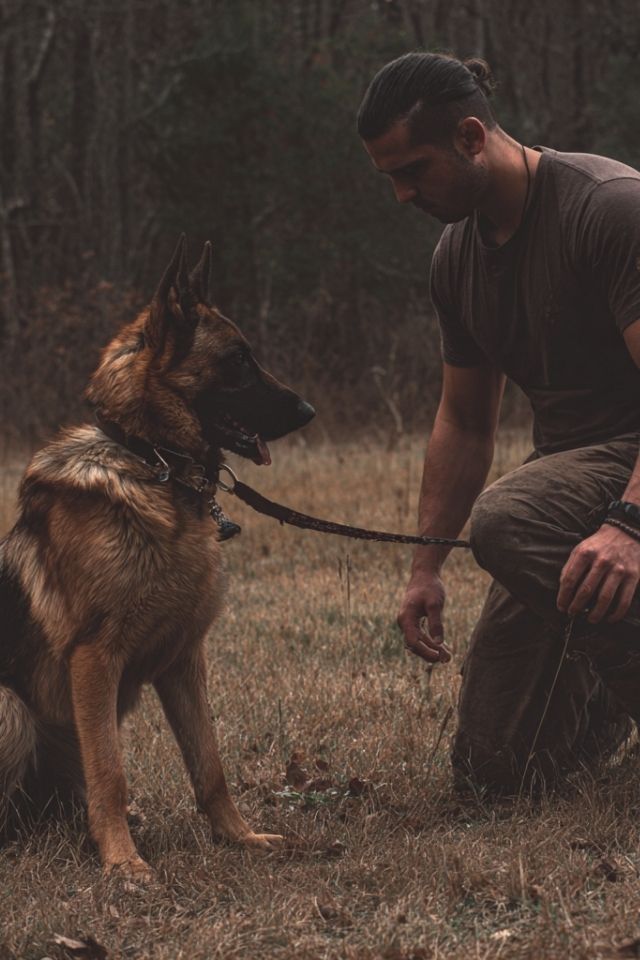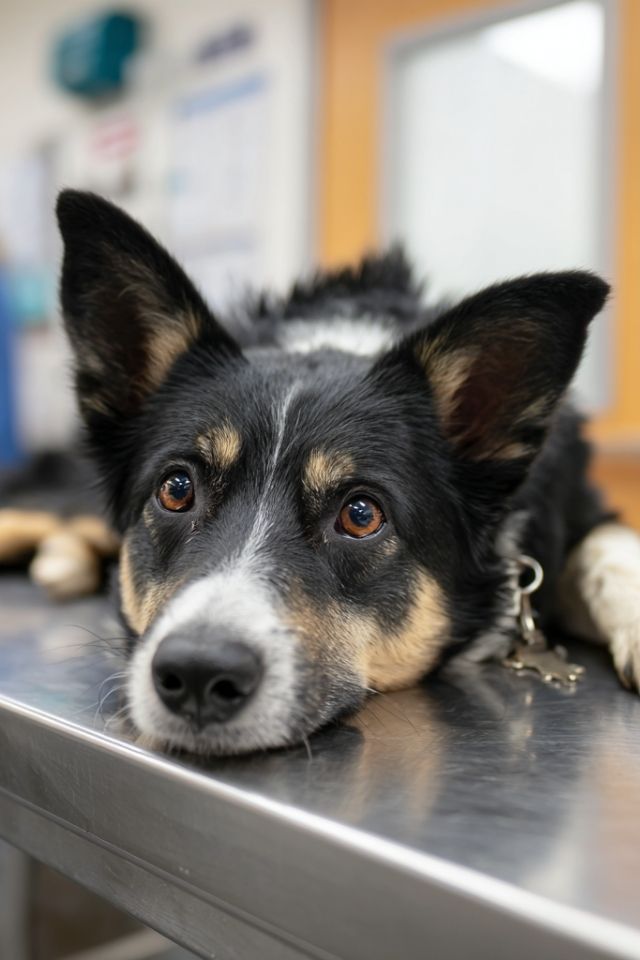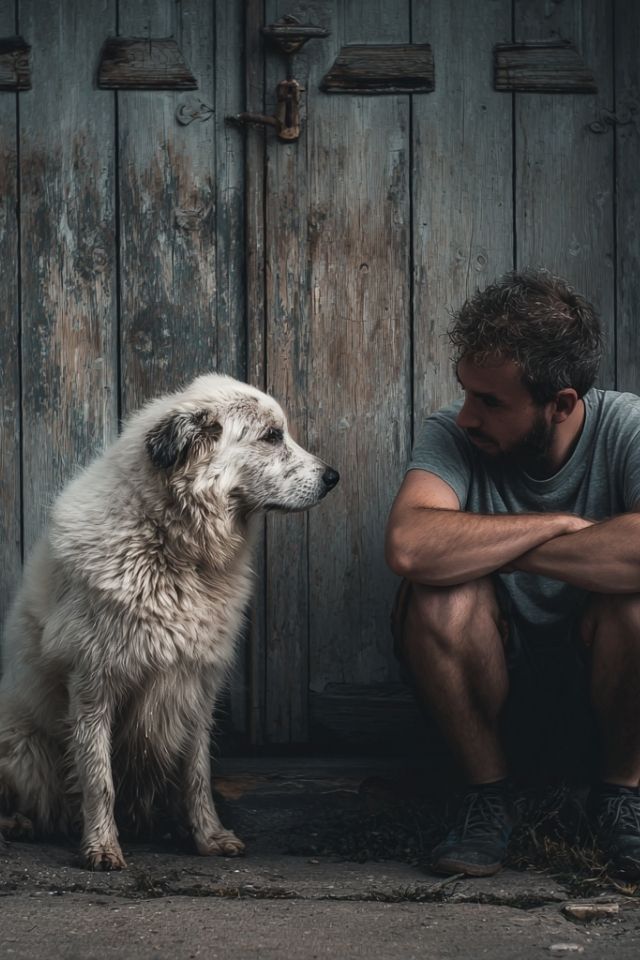There’s a moment every night shift nurse knows intimately—that disoriented instant when you wake at 3 PM, curtains drawn against the afternoon sun, your body confused about whether it’s beginning or ending. Your internal compass spins. Your hunger arrives at the wrong hour. Sleep feels like a negotiation your body keeps losing.
Now imagine: your dog feels this too.
Not because they’ve chosen irregular hours, but because they’ve chosen you. And in that choice, their entire biological world—delicate, invisible, profound—begins to drift.
This isn’t about blame. It’s about recognition. About understanding that the Invisible Leash connecting you to your dog doesn’t just carry commands and affection—it carries time itself. And when your time fractures, so does theirs.
The Clock Inside: A Symphony Played in Darkness
Picture a conductor standing before an orchestra, baton raised in the darkness before dawn. This is your dog’s suprachiasmatic nucleus—a cluster of neurons so small you could barely see it, yet powerful enough to coordinate every rhythm in their body. It conducts the rise and fall of hormones, the opening and closing of digestive gates, the warming and cooling of blood, the descent into dreams.
For thousands of years, this conductor has followed the same score: light and dark, activity and rest, hunger and satisfaction arriving in reliable waves. The music has always been predictable.
Until you.
When you accepted that first night shift, when your footsteps began echoing through the house at 2 AM instead of 7, when breakfast became dinner and darkness became light, you didn’t just change your schedule. You handed your dog’s internal conductor a new score—one that changes every week, sometimes every day. The musicians try to follow. Some sections speed up. Others fall behind. The harmony fractures.
This is circadian disruption, and it happens not in the mind, but in the cells. It’s written in confused liver enzymes and mistimed hunger pangs. It’s felt in the exhaustion that arrives at the wrong hour, in the cortisol that refuses to rest. 🧠
Your dog’s body still tries to follow you—because that’s the ancient contract of domestication, the NeuroBond that synchronized wolf to human fire thousands of generations ago. But now the fire moves. The light appears and vanishes without pattern. And your dog’s biology, loyal as it is, begins to pay a price.
Light as Language: When the Sun Speaks in Riddles
There’s a hormone your dog’s body produces in darkness, rising like a tide as evening deepens. Melatonin—the messenger of night, the chemical whisper that says rest now, restore now, let go now. It doesn’t just invite sleep. It orchestrates healing, regulates temperature, quiets inflammation. It arrives with dusk like an old friend.
But what happens when dusk comes at noon? When the living room blazes with light at midnight because you’re eating breakfast before your graveyard shift? When your dog’s eyes register brightness during the hours their pineal gland expects only darkness?
The message becomes noise. The tide forgets its rhythm.
Research reveals that constant light exposure doesn’t just disturb sleep—it rewrites metabolism at the genetic level. Genes that should be breaking down fat instead start storing it. Pathways that maintain blood sugar stability begin to waver. The body, confused about what time it is, starts preparing for the wrong season, the wrong meal, the wrong life.
Your dog experiences this confusion as physiology, not thought. They can’t articulate why they feel restless at 4 AM or why hunger gnaws at strange hours. They only know something has shifted in the invisible architecture of their days, and their body—honest, adaptive, trusting—keeps trying to make sense of signals that no longer form a pattern.
When you work rotating shifts, you’re not just absent. You’re teaching your dog’s cells a language that changes its grammar every three days. 🐾
The Stress That Doesn’t Sleep
Meet Luna, a three-year-old Border Collie whose person began working 12-hour rotating shifts at a hospital. Within two months, Luna’s behavior transformed. She paced through the night. She snapped at the family cat. She stopped greeting her person at the door with the old joy—instead, she’d glance up briefly, then return to her bed, as if connection itself had become exhausting.
Her person thought it was resentment. Maybe separation anxiety. Maybe Luna was “getting back at her” for the absences.
The truth was simpler and sadder: Luna’s stress system was collapsing.
The hypothalamic-pituitary-adrenal axis—the body’s stress response system—relies on circadian timing to know when to activate and when to rest. Cortisol should rise in the morning, providing energy and alertness, then gradually decline through the day, reaching its lowest point at night. This rhythm doesn’t just manage stress; it regulates mood, immune function, and the capacity to feel safe.
When circadian rhythms destabilize, cortisol flattens. Instead of rising and falling, it hovers—a chronic hum of activation that feels like threat without source, like anticipation without release. The dog becomes irritable not from spite, but from a body that won’t stop preparing for something that never comes.
Some dogs, like Luna, withdraw—the hyperactivity of their internal state contrasting with an external stillness that looks like depression. Others explode outward: destructive behavior, obsessive licking, reactivity that seems to appear from nowhere. These aren’t choices. They’re symptoms of a biology unmoored from time.
The most heartbreaking part? Your dog can’t tell you what’s wrong. They only know that lately, the world feels harder. That sleep doesn’t restore the way it used to. That even your presence, when it finally comes, feels slightly off-rhythm—like a song they’ve forgotten how to dance to. 🧡
The Body That Forgets When to Eat
There’s a particular kind of hunger that comes with shift work—that hollow, confused feeling at 3 AM when your body insists it’s dinnertime, even though you ate six hours ago. Your stomach argues with your mind. Nothing tastes right. You eat, but satisfaction doesn’t come.
Your dog knows this hunger too.
Ghrelin, leptin, insulin—these hormones form what scientists call the metabolic triangle, a precise chemical conversation that should happen at predictable intervals. Ghrelin rises to signal hunger. Food arrives. Insulin processes the glucose. Leptin confirms satisfaction. The cycle completes, and the body trusts that the next meal will come at the expected time, so it can rest between.
But when meal times drift—breakfast at 6 AM one day, noon the next, skipped entirely the day after—the triangle collapses into confusion. Ghrelin starts crying out at the wrong hours. Leptin stops confirming fullness. Insulin, released in anticipation of food that doesn’t arrive, leaves blood sugar crashing.
Studies show that dogs fed at consistent times maintain better glucose regulation, more stable insulin responses, and healthier fat metabolism than dogs fed irregularly—even when the total food amount is identical. The timing is the medicine.
This is why dogs of shift workers often gain weight despite careful portion control. Their metabolism isn’t just responding to calories; it’s responding to chaos. The body, unable to predict when energy will arrive, starts storing everything. Fat accumulates. Inflammatory markers rise. The dog becomes heavier not from overfeeding, but from a biological system that’s lost its ability to trust time.
Imagine living in a world where you never know when the next meal comes, where hunger and fullness have stopped making sense, where your body keeps preparing for famine even as food sits in the bowl. This is the metabolic experience of circadian disruption.
And yet—there’s hope in this understanding. Because if time is the wound, time can also be the healing. 🐾
The Anchor in the Storm: Feeding as Ritual
Here’s what research has discovered, quietly revolutionary: even when everything else in the environment becomes chaos—light at midnight, silence at noon, human presence arriving and vanishing without pattern—consistent feeding times can hold the center.
Time-restricted feeding, as scientists call it, acts as a powerful zeitgeber—a “time giver.” When meals arrive at the same hour every day, they send a signal deep into the gastrointestinal system, which then communicates with the liver, the pancreas, the fat tissue. These organs, receiving a reliable cue, can maintain their rhythms even when the master clock in the brain receives conflicting information from light and activity.
Think of it as an anchor in a storm. The surface waters churn, the wind changes direction, but the anchor holds the boat in place. Consistent feeding becomes that anchor for your dog’s metabolism.
This doesn’t require your physical presence. It requires precision—the same times, every day, automated if necessary. A timed feeder that delivers breakfast at 7 AM whether you’re home or sleeping after a night shift. Dinner at 6 PM, arriving like a promise kept.
Over weeks, this temporal consistency begins to restore order. Clock genes in the liver resume their rhythm. Fat metabolism stabilizes. The dog’s body, receiving one reliable signal, uses it to reconstruct predictability in other systems.
It’s not a complete solution—circadian health requires multiple synchronized cues. But it’s a beginning. A way of saying to your dog’s biology: I know everything else is uncertain, but this one thing—this you can trust.
The Invisible Leash That Carries Time
The NeuroBond between human and dog isn’t just emotional—it’s temporal. Your dog has learned to synchronize with you, to read your patterns, to let your rhythms become theirs. When you wake, they wake. When you settle, they settle. This synchronization runs deeper than training or obedience. It’s written into the biology of domestication itself.
But this creates vulnerability. When your rhythms fracture, theirs follow.
There are small things you can do, even within the chaos of shift work, that provide temporal anchors—moments of predictability that your dog’s nervous system can hold onto:
Light and darkness, governed by smart bulbs programmed to dim and brighten at the same times daily, regardless of your actual schedule. Your dog needs a night, even if it happens to be noon.
A protected sleep space, where blackout curtains and white noise create consistency—a sanctuary where time behaves predictably, even when the rest of the house doesn’t.
Micro-rituals—a five-minute training session at 8 PM every evening, a grooming routine every morning at 9, a specific walk at 3 PM. Not long stretches of time, but consistent moments that serve as temporal landmarks. Your dog’s nervous system learns: This happens now. I can rely on this.
These aren’t luxuries. They’re medicine. They provide the “relational synchrony” that dogs need—not just connection, but predictable connection. Not just love, but love that arrives when expected, that creates a rhythm the body can follow. 🧡
When the Body Speaks What the Heart Cannot
Sometimes the first sign isn’t behavioral. It’s a thickening around the ribs, a lethargy that looks like laziness but feels like drowning. Weight gain that defies calories. Digestive upset that comes and goes without clear cause.
These are the body’s ways of speaking when circadian rhythms collapse—a language of metabolism and inflammation that precedes words. Your dog can’t tell you their cortisol won’t rest or their liver clocks are desynchronized. But their body shows you, if you know how to look:
The pacing at midnight. The reluctance to settle. The eyes that look tired even after sleep. The increased reactivity—barking at sounds that used to pass unnoticed, startling at movement, unable to relax even in safety.
This is what chronic circadian disruption looks like from the inside: a body that can’t find its rhythm, a nervous system that won’t rest, a soul trying to stay connected to a person whose time has become unpredictable.
If you work irregular hours, watch for these signs. Not with guilt—you didn’t choose this to harm your dog—but with awareness. Because awareness opens the door to intervention, to asking: What can I make consistent, even if I cannot be?
The Gift of Predictable Time
There’s a paradox here, beautiful in its way: your dog doesn’t need you to work regular hours. They need you to create regular patterns.
A dog can adapt to sleeping during the day, to eating at unconventional times, to a household that operates on a reversed schedule—as long as that reversal remains consistent. What damages them isn’t the specific timing. It’s the unpredictability.
This is where technology becomes ally. Automatic feeders that deliver meals with mechanical precision. Smart lights that create dawn and dusk on schedule. White noise machines that mask the irregular sounds of your movement. Activity monitors that track sleep patterns, alerting you when disruption crosses from manageable into crisis.
These tools don’t replace you. They stabilize the environment around your absence, creating a predictable temporal structure that your dog’s circadian system can follow.
And when you are present—even if it’s at 2 PM instead of 8 AM—you can offer soul-level connection. Fifteen minutes of complete presence, where your attention doesn’t waver. A grooming session that becomes meditation. A training game that engages their mind and confirms: You are here. I am here. This moment is ours.
Your dog will synchronize with these moments. They’ll learn to rely on them. And slowly, their biology will find footholds in the chaos—consistent feeding, protected sleep, rituals of connection. Not perfect. Not ideal. But enough. Often, wonderfully, enough. 🐾
Walking Forward Together
The research is clear, but the truth is deeper: when your work schedule becomes irregular, you and your dog both become travelers in a landscape where time no longer functions as it should. You’re both disoriented. Both adapting. Both paying a physiological price.
But you have something your dog doesn’t: the capacity to create structure from chaos, to build islands of consistency in the storm. You can set the feeder. You can program the lights. You can protect their sleep. You can offer micro-rituals that become temporal anchors.
This isn’t about guilt. It’s about agency. About recognizing that circadian disruption is real, measurable, consequential—and also, partially, within your power to address.
The Invisible Leash that connects you carries more than commands. It carries trust. And part of that trust is your dog’s expectation that you’ll help them navigate a world that has become temporally confusing. You do this not by changing your work—most of us can’t—but by creating pockets of predictability, moments of rhythm, anchors in time.
Your dog’s biology will respond. Slowly, perhaps. Imperfectly, certainly. But the body knows how to follow consistent cues, how to rebuild rhythms from reliable signals. Give those signals. Create those patterns.
And remember: the fact that you’re reading this, learning this, caring about this—that itself is part of the solution. Because awareness precedes change, and intention shapes action, and love finds a way to become practical.
Your dog’s internal clock is counting on you—not to be perfect, but to be intentional. Not to eliminate all chaos, but to create small sanctuaries of time where rhythm can exist. Where breakfast arrives like sunrise. Where sleep is protected like prayer. Where connection happens not by chance, but by design.
In the end, this is what the NeuroBond asks of us: to see the invisible, to honor the biological, to remember that the relationship between human and dog isn’t just emotional—it’s temporal, metabolic, circadian. A dance played out in hormones and sleep cycles, in feeding times and light exposure, in the small daily rhythms that tell a body: You are safe. Time is reliable. We are still, despite everything, synchronized.
This is the gift you can give, even on night shifts. Even in chaos. Even when your own internal clock is spinning.
The gift of predictable time. The medicine of consistent rhythm. The quiet promise that somewhere in the storm, an anchor holds. 🧡
When time becomes a stranger, love becomes the map back home.






